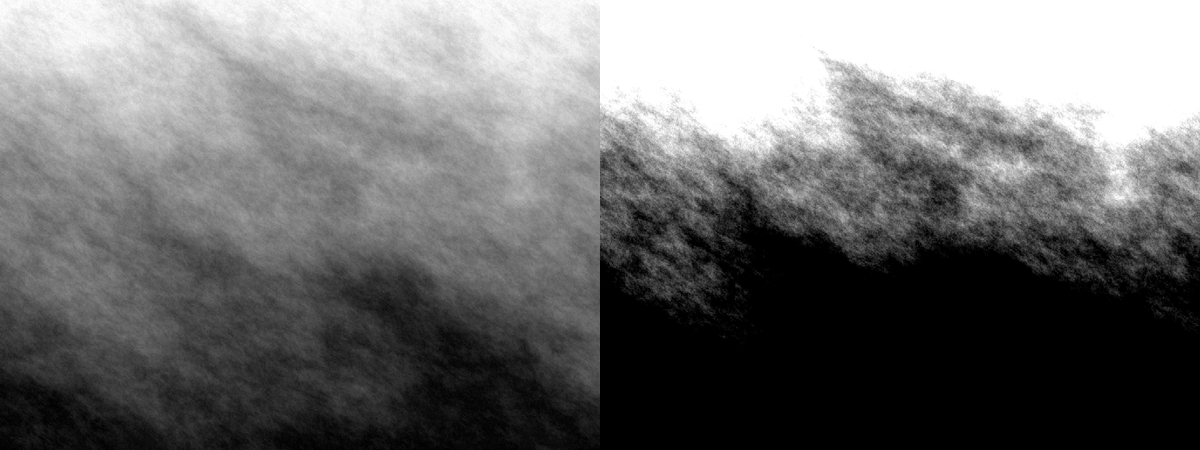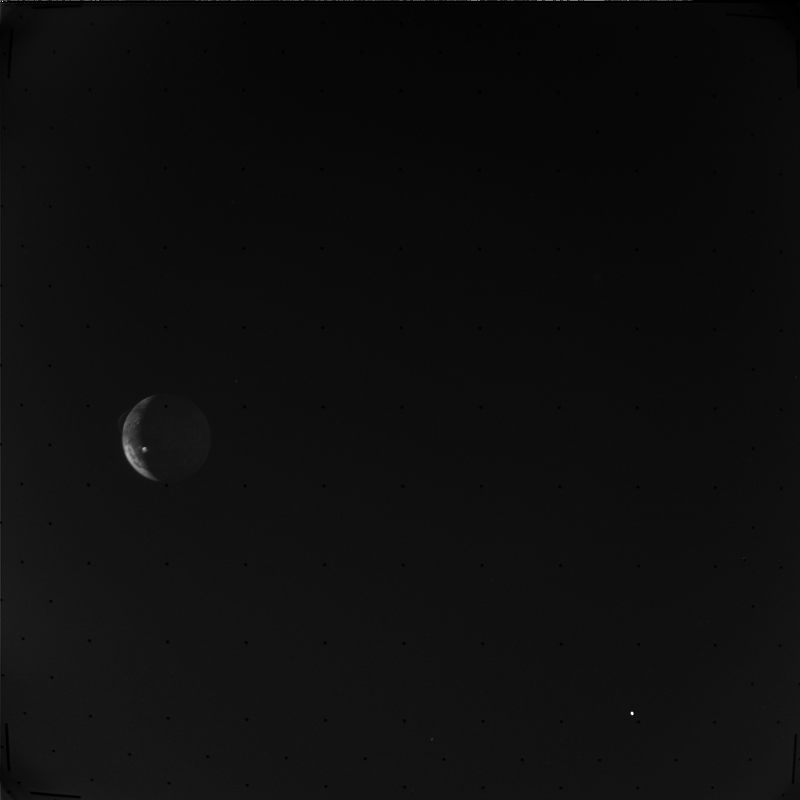
./simd-map-levels 100 180 < simd-map-levels-in.pgm > out.pgmLast updated: 2024-01-28
Let us consider a grayscale bitmap with \(M\) rows and \(N\) columns, where the color of each pixel is an integer from 0 (black) to 255 (white). Given two values low, high, \(0 \leq \mathit{low} < \mathit{high} \leq 255\), the function map_levels(img, low, high) modifies img so that the pixels whose gray level is less than low become black, those whose gray level is greater than high become white, and those whose gray level is between low and high (inclusive) are linearly mapped to the range \([0, 255]\).
Specifically, if \(p\) is the gray level of a pixel, the new level \(p'\) is defined as:
\[ p' = \begin{cases} 0 & \text{if}\ p < \mathit{low}\\ \displaystyle\frac{255 \times (p - \mathit{low})}{\mathit{high} - \mathit{low}} & \text{if}\ \mathit{low} \leq p \leq \mathit{high}\\ 255 & \text{is}\ p > \mathit{high} \end{cases} \]
Figure 1 shows the image produced by the command
./simd-map-levels 100 180 < simd-map-levels-in.pgm > out.pgm
./simd-map-levels 100 180 < simd-map-levels-in.pgm > out.pgmWe provide the image C1648109 taken by the Voyager 1 probe on March 8, 1979. The image shows Io, one of the four Galilean moons of the planet Jupiter. The Flight Engineer Linda Morabito was using this image to look for background stars that could be used to determine the precise location of the probe. To this aim, she remapped the levels so that the faint stars would be visible. This lead to one of the most important discoveries of modern planetary sciences: see by yourself by running the program
./simd-map-levels 10 30 < C1648109.pgm > out.pgmand look at what appears next to the disc of Io at ten o’clock…

The file simd-map-levels.c contains a serial implementation of function map_levels() above. The goal of this exercise is to develop a SIMD version using GCC vector datatypes. We start by defining a vector datatype v4i that represents four integers:
The idea is to process the image four pixels at a time. However, the serial code
int *pixel = bmap + i*width + j;
if (*pixel < low)
*pixel = BLACK;
else if (*pixel > high)
*pixel = WHITE;
else
*pixel = (255 * (*pixel - low)) / (high - low);is problematic because it contains conditional statements that can not be directly vectorized. To address this issue we use the selection and masking technique. Let pixels be a pointer to a v4i SIMD array. Then, the expression mask_black = (*pixels < low) produces a SIMD array of integers whose elements are -1 for those pixels whose gray level is less than low, 0 otherwise. mask_black can therefore be used as a bit mask to assign the correct values to these pixels.
Using the idea above, we can rewrite the code as follows:
v4i *pixels = (v4i*)(bmap + i*width + j);
const v4i mask_black = (*pixels < low);
const v4i mask_white = (*pixels > high);
const v4i mask_map = ??? ;
*pixels = ( (mask_black & BLACK) |
(mask_white & WHITE) |
( ??? ) );The compiler automatically promotes BLACK and WHITE to SIMD vectors whose elements are all BLACK or WHITE, respectively. The code above can be further simplified since (mask_black & BLACK) always produces a SIMD array whose elements are all zeros: why?.
The SIMD version requires that
Each row of the bitmap is stored at a memory address that is multiple of 16;
The image width is multiple of 4, the v4i SIMD vector width.
The program guarantees both conditions by adding columns so that the width is multiple of 4. The attribute width of structure PGM_image is the width of the padded image, while true_width is the true width of the actual image, \(\texttt{width} \geq \texttt{true_width}\).
To compile:
gcc -std=c99 -Wall -Wpedantic -O2 -march=native simd-map-levels.c -o simd-map-levelsTo execute:
./simd-map-levels low high < input_file > output_filewhere \(0 \leq \mathit{low} < \mathit{high} \leq 255\).
Example:
./simd-map-levels 10 30 < C1648109.pgm > C1648109-map.pgmYou can generate input images of arbitrary size with the command:
convert -size 1024x768 plasma: -depth 8 test-image.pgm